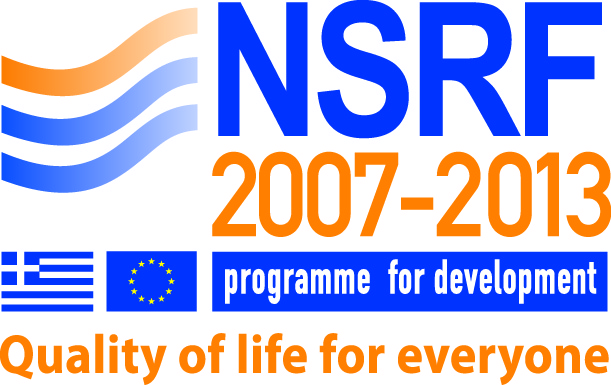Προσδιορισμός αντισωμάτων έναντι του διαιτητικής προέλευσης αντιγόνου Neu5Gc στο εγκεφαλονωτιαίο υγρό ασθενών με νόσο Alzheimer (Bachelor thesis)
Παρχαρίδη, Ζωή
Full metadata record
| DC Field | Value | Language |
|---|---|---|
| dc.contributor.author | Παρχαρίδη, Ζωή | el |
| dc.date.accessioned | 2020-03-27T18:03:03Z | - |
| dc.date.available | 2020-03-27T18:03:03Z | - |
| dc.identifier.uri | http://195.251.240.227/jspui/handle/123456789/11627 | - |
| dc.description | Πτυχιακή εργασία--ΣΕΥΠ-Τμήμα Ιατρικών Εργαστηρίων, 2018—9830 | el |
| dc.rights | Default License | - |
| dc.subject | Νόσος Alzheimer | el |
| dc.subject | διαιτητικά αντιγόνα | el |
| dc.subject | Neu5Gc | en |
| dc.subject | εγκεφαλονωτιαίo υγρό | el |
| dc.subject | alzheimer’s disease | en |
| dc.subject | food derived antigens | en |
| dc.subject | cerebrospinal fluid | en |
| dc.subject.lcsh | Μνήμη, Διαταραχές της | el |
| dc.subject.lcsh | Νόσος Alzheimer -- Διάγνωση | el |
| dc.subject.lcsh | Αντιγόνα -- Ανάλυση | el |
| dc.title | Προσδιορισμός αντισωμάτων έναντι του διαιτητικής προέλευσης αντιγόνου Neu5Gc στο εγκεφαλονωτιαίο υγρό ασθενών με νόσο Alzheimer | el |
| heal.type | bachelorThesis | - |
| heal.type.en | Bachelor thesis | en |
| heal.contributorName | Παρχαρίδη, Ζωή | el |
| heal.identifier.secondary | 9830 | - |
| heal.language | el | - |
| heal.access | account | - |
| heal.recordProvider | Σχολή Επαγγελμάτων Υγείας και Πρόνοιας / Τμήμα Ιατρικών Εργαστηρίων | el |
| heal.publicationDate | 2018-06-14 | - |
| heal.bibliographicCitation | Παρχαρίδη, Ζ. (2018). Προσδιορισμός αντισωμάτων έναντι του διαιτητικής προέλευσης αντιγόνου Neu5Gc στο εγκεφαλονωτιαίο υγρό ασθενών με νόσο Alzheimer (Πτυχιακή εργασία). Αλεξάνδρειο ΤΕΙ, Θεσσαλονίκη. | el |
| heal.abstract | Υπόβαθρο: Υψηλές συγκεντρώσεις αντισωμάτων έναντι αντιγόνων διαιτητικής προέλευσης έχουν συσχετιστεί με την εμφάνιση διαφόρων ασθενειών. Πιο συγκεκριμένα, υψηλές συγκεντρώσεις αντισωμάτων έναντι του Neu5Gc, ένα σιαλικό οξύ που συντίθεται από τα ζώα αλλά όχι από τον άνθρωπο και υπάρχει σε ζωικής προέλευσης προϊόντα, έχουν ανιχνευθεί σε διάφορα αυτοάνοσα νοσήματα όπως η θυρεοειδίτιδα Hashimoto, ο σακχαρώδης διαβήτης και διάφορες μορφές καρκίνου. Μετά την εισαγωγή του στον ανθρώπινο οργανισμό, το Neu5Gc ενσωματώνεται στις ανθρώπινες πρωτεΐνες, προκαλώντας ωστόσο ανοσολογική αντίδραση. Η δυνατότητα των αντισωμάτων, που αναγνωρίζουν διαιτητικά αντιγόνα, να συνδέονται με ανθρώπινες πρωτεΐνες με δομική ομολογία με τα αντιγόνα αυτά ενδεχομένως να σχετίζεται με την ανάπτυξη της νόσου. Οι πρωτεΐνες που έχουν συσχετιστεί με τη νόσο Alzheimer, το β-αμυλοειδές πεπτίδιο και η tau πρωτεΐνη, είναι πρωτεΐνες που υφίστανται γλυκοζυλίωση και ως εκ τούτου θα μπορούσαν να τροποποιηθούν ενσωματώνοντας το Neu5Gc. Στην παρούσα εργασία επιχειρείται η διερεύνηση ύπαρξης αντισωμάτων έναντι του Neu5Gc στο εγκεφαλονωτιαίο υγρό 12 υγιών ατόμων και ασθενών με νόσο Alzheimer ήπιας βαρύτητας (12), μέτριας (9) και σοβαρής (5). Μέθοδος: Για τον προσδιορισμό αντισωμάτων έναντι του Neu5Gc χρησιμοποιήθηκε έμμεση ELISA, στην οποία τα αντιγόνα ήταν προσκολλημένα στον πυθμένα της πλάκας. Αποτελέσματα: Δεν παρατηρήθηκε διαφοροποίηση στη συγκέντρωση των antiNeu5Gc IgG, IgM και ΙgA αντισωμάτων μεταξύ των ασθενών και του υγιούς πληθυσμού. Ως εκ τούτου το Neu5Gc διαιτητικό αντιγόνο δεν φαίνεται να εμπλέκεται στην παθοφυσιολογία της νόσου | el |
| heal.abstract | Background: High concentrations of antibodies against food derived antigens have been correlated with the development of several diseases; in particular, high concentrations of antibodies against Neu5Gc, a sialic acid present in products of animal origin that can be synthesized by them but not by humans, have been detected in various autoimmune diseases such as Hashimoto’s thyroiditis, diabetes and several types of cancer. After entering the body, Neu5Gc is embedded in human proteins, provoking, however, immune response. The capability of such antibodies to bind specific human proteins with structural homology with the food derived antigens may be involved in the development of the diseases. The proteins that have been linked with Alzheimer’s disease, β-amiloyd peptide and tau protein, undergo glycosylation, therefore, they could be modified embedding Neu5Gc. In the present study, antibodies against Neu5Gc were measured in the cerebrospinal fluid of 12 healthy individuals and in patients with mild (12), moderate (9) and severe (5) Alzheimer’s disease. Methods: For the detection of antibodies against Neu5Gc, the antigens were attached at the bottom of ELISA plates. Results: No distinction was observed between the concentrations of anti-Neu5Gc IgG, IgM and IgA antibodies on healthy individuals and patients with Alzheimer’s disease. Thus, the food derived antigen Neu5Gc does not appear to have any involvement in the pathophysiology of the disease | en |
| heal.advisorName | Ελευθερίου, Φαίδρα | el |
| heal.committeeMemberName | Ελευθερίου, Φαίδρα | el |
| heal.academicPublisher | Τμήμα Ιατρικών Εργαστηρίων | el |
| heal.academicPublisherID | teithe | - |
| heal.numberOfPages | 85 | - |
| heal.fullTextAvailability | false | - |
| heal.type.el | Προπτυχιακή/Διπλωματική εργασία | el |
| Appears in Collections: | Πτυχιακές Εργασίες | |
Files in This Item:
There are no files associated with this item.
Please use this identifier to cite or link to this item:
This item is a favorite for 0 people.
http://195.251.240.227/jspui/handle/123456789/11627
Items in DSpace are protected by copyright, with all rights reserved, unless otherwise indicated.




